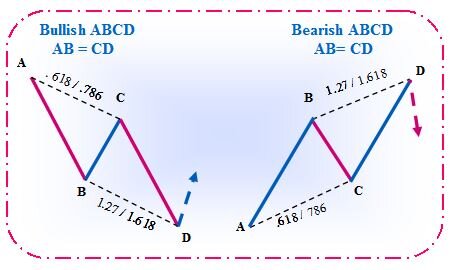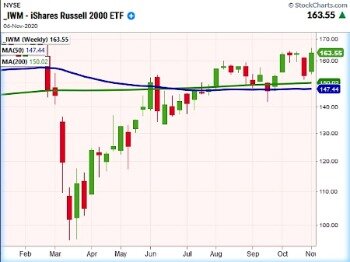
If you’re running a candle making business, using waxed wicks will make your candle more professional. When double-wicking a candle, you will use two wicks instead of one. Instead of https://trading-market.org/ basing the wick size on the total diameter of the container, you need to divide the diameter in half. Then choose a wick size that is appropriate for half of the diameter of the jar.

A type of wax may work better with a certain type of wick. Higher viscous waxes such as single pour paraffin wax, soy (vegetable) wax, and beeswax, may require up to several sizes larger than the recommendations below. While the wick sizes in the chart should help point you in the right direction, the ideal wick size can vary depending on numerous factors. As we discuss in our post about wicking candles correctly, things such as the container material, thickness and even color can affect how a candle performs. The type of fragrance you use and your fragrance load can also play a role.
Step 1: Pick a wax type
The kind of wax you use is essential in choosing the right wick because it supplies the heat (melted wax) needed to maintain burning. Even though small in comparison to other aspects of candles overall, selecting an appropriate wick is critical when creating your candles. Capillary action is due to the adhesion, surface tension, and cohesion of a certain fuel. It is critical to keep an eye on the candles while they are burning, especially when testing new wicks.
The three wicks should be of different sizes as suggested earlier. They are the suggested size in the chart, the size above, and the size below. If you’re making candles without a container, like pillars, go to measure the diameter of your mold. Let’s take a look at the characteristics of a right-wicked candle.
What size wick do I need for my candle?
Divide your diameter by the number of wicks you intend to use. For example, if you want to wick a 3″ candle with 2 wicks, the answer would be 1.5″ (3″ ÷ 2). Use this number (1.5″ in the example above) as your effective diameter. Navigate to a wick chart of your choosing.
I’ll even go so far as to say, that the containers, type of wax, and scent you select won’t matter if you use the wrong candle wicks. These wicks have all been primed (pre-waxed), cut to the specified length, and tabs have already been crimped on. We offer a large variety of diameters (sizes) and lengths available in several different series. You may need to experiment to get the correct size and style wick for the candle you are making.
candlescience
LX wicks have a very flat finish, although braided in natural cotton threads. They help candles have a consistent flame due to their curling ability that reduces mushrooming, afterglow, soot, and smoke. Each is coated in natural soy wax, fully biodegradable, and environmentally responsible. Last but not least, consider the burn time of the wax. Soy wax, for example, has a longer, slower burn time than paraffin wax so a thinner wick may be best. Choosing the right candle wicks is crucial if you want to avoid candle wick problems and create high-quality candles.
- Therefore, it is essential to grasp the varieties of candle wicks to make sure you pick the right type of wick to start with.
- Wick Selection can be confusing and overwhelming at first.
- Continue to document the candle profile through each step in the process.
- Stabillo KST formerly known as CDN is a flat braided cotton wick with a special paper filament thread.
- Its sound when it sizzles adds to the appeal, as does its tendency to curl organically during use.
The wick may be too large and hot so that some particles are still unburned. However, a too large wick will lead to smoking or sooting due to incomplete combustion. That may let you and your pets feel sick, such as cough, sneezing, dizziness, or wheezing. Testing is the only way to determine the best wick to use for each candle project. If you have any questions or need help using the wick guide, please contact us.
deluxe satin soy
It is important to keep your wicks well labeled and separated since similar sizes look identical. Often the only difference is the tightness of the braiding. Choosing the right candle wicks size can make or break your candle! If you’re new to candle making don’t miss our beginners’ guide. The measuring method between different wick types may vary. When conducting a burning test, you need to get three sizes of wicks under the same type.
Once you have your type of candle wick, then you’ll have to test different wick sizes to choose the right candle wick for your candle recipe. The wick’s role is to act like a pump, drawing the melted wax fuel up towards the flame. It should be of an appropriate size to ensure enough wax melts and forms a fully extended pool at the edges of its container. Allow the candle to burn for another four hours and record the details of the melt pool and wick again before gently blowing out the flame. At this point the melt pool of a well-wicked candle will have achieved the desired diameter and should be approximately ½” (1.3 cm) deep. The chart gives some general guidelines for wick sizes, but in order to ensure that the correct wick size is used, a burn test needs to be performed.
Use this chart as a starting point to conduct your own burn tests – find more information on how to find the right candle wick here. We offer 12 piece bags of most wick sizes in the CD and ECO series, so that you can conduct your initial burn tests with minimal investment. You may find it helpful to keep a range of wick sizes on hand for any ongoing or future testing. Watch our „Choosing the Right Wick Size“ video to see how a properly wicked candle burns. The flame is less than 1 inch tall and does not flicker. Also, the melt pool is about 1/2 inch deep and has extended to the edge of the container.
As we explained above, the candle wick size chart can only help us find a range of suitable candle wick sizes. We need to test which specific wick size works best with our candles, combining the factors including fragrances, colors, and candle burn time. For whatever reason, candle wicks are often the last choice or even an afterthought when it comes to candle making.
Picking a candle wick can feel like a daunting process, which is why we put together this helpful chart to get you started. This candle wick chart is intended to help you get off on the right foot when you start testing candles. We hope this free resource will also help you save time and candle wick size chart money in the testing phase. Use the 3 wick sizes to test your candles and if one of them is not perfect then consider testing out two smaller wicks per candle to help resolve the situation. After burning for four hours the surface wax should be molten from rim to rim of the container.
Can a wick be too big for a candle?
In general, choosing too large a wick will result in excessive flame size and hence a deep burn pool, causing too large a portion of the candle to liquefy, and, in the case of pillar candles, collapse the walls.
Furthermore, the wick has minimal to no carbon build-up. This candle will have a consistent burn throughout the entire burning process. The wax type plays an important part in wick selection as it provides the fuel (melted wax) to support burning.

Wood wicks don’t need to be pre-waxed for a great burn. My favorite wood wicks are made in the U.S. from native, sappy fruit trees and sourced sustainably from the Forest Stewardship Council (FSC). They create a cozy campfire atmosphere, crackling, and all!
For example, a 4” diameter soy wax candle might be suitable wicked with two LX 10 wicks rather than one LX 24 wick. Waxing or “priming” a candle wick comes with several benefits. A primed candle wick will light more easily, burn more evenly, and it will burn more reliably. Priming your candle wicks is just an extra step you can take to ensure you are making a quality product. Create a mixture of enough material to make three identical candles, the only difference in these candles will be the size of the wicks in them. These three different wick sizes will allow you to test a variety of wicks allowing you to see the impact of your wax, fragrance oil and dye combination.
With that in mind, the recommendations in this candle wicking chart are not guaranteed to work in all situations. There are simply too many factors at play to make a chart that includes every possible situation. Our CDN wicks are coated in high melt point wax to ensure a more stable burn and to prevent the wick from flopping over. Ask your friends and family for feedback on how they thought the candles performed vs candle brands they’ve used in the past. Ask them questions about burn time, mushrooming wicks, scent throw, tunneling, and get all the feedback you can.
Japanese candlestick trading guide – ig.com
Japanese candlestick trading guide.
Posted: Mon, 15 Jun 2020 14:31:21 GMT [source]
Since the most challenging candle to get right is the pillar candle, I will focus most of this article on the components of making a great pillar candle. In my opinion, the perfect pillar candle will create a burn pool that extends out most of the diameter of the candle, but not all the way. The flame is nice and bright with no smoke trails and the candle burns down all the way to the bottom without looking ugly and misshapen. The latter is really hard to achieve with taller candles so, although I make them, I prefer the small and medium sized candles for personal use. It turns out candle wicks are one of the most important considerations while making beeswax candles. The particular beeswax you’re working on can affect the way the wick burns, so some experimenting may be in order to find the best wicks for beeswax candles.
Let’s be honest, customers rarely follow recommended candle burning guidelines. Their candles are often left forgotten or only burned for short periods of time due to unexpected events. Use the chart above to select the type of wick + sizes to test. HTP’s versatility allows for the utilization of soy waxes, as well as even single pour paraffin which is typically thicker than other varieties. HTP wicks offer a unique combination of flat braid cotton and paper filament, making them exceptionally strong while also eliminating common issues such as mushrooming and soot. The Premier-700 wick is a flat braided wick with a cotton core, ensuring it delivers clean-burning results and minimizes the risk of carbon buildup.
- This chart will tell you which wicks you need for paraffin wax container candles based on the wax type and the diameter of the container that you are using.
- That may let you and your pets feel sick, such as cough, sneezing, dizziness, or wheezing.
- The zinc core structure provides maximum rigidity and strength to keep the wick straight in melted wax.
- It is critical to keep an eye on the candles while they are burning, especially when testing new wicks.
- The numbers listed in the left side of the chart refer to the interior diameter of the container in inches.
It typically has a rigid, straight structure without the need for a core. If a candle wick is too large in size, it may develop too much heat and have a deeper melt pool. Consequently, the container will be too hot or even shatter if you’re using a glass container. If you’re making candles with candle making kits, things will be simpler as some of them may include the right wicks to pair the candle wax and containers. Chances are, anyone who’s ever made a candle has found themselves asking this question!
Can a wick be too big for a candle?
In general, choosing too large a wick will result in excessive flame size and hence a deep burn pool, causing too large a portion of the candle to liquefy, and, in the case of pillar candles, collapse the walls.